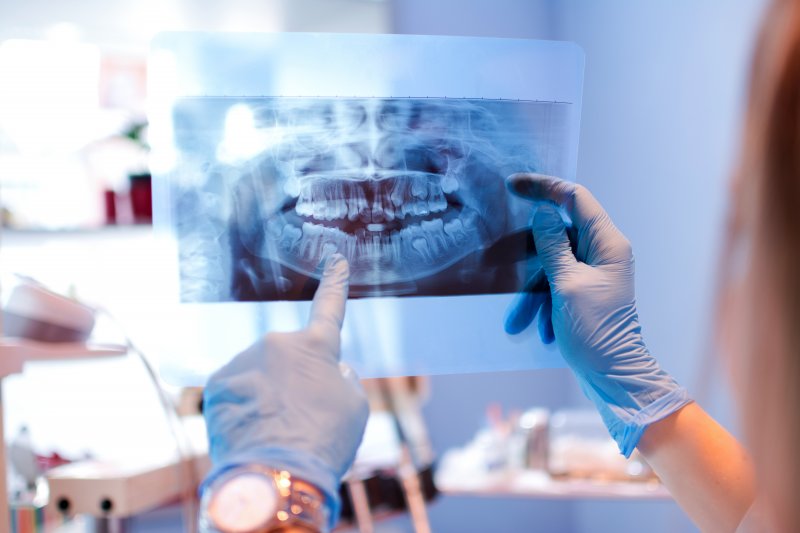
Your mouth is a complex puzzle with many pieces that can all go wrong in multiple ways. A dentist’s best option for looking at the puzzle in its entirety is an X-ray. There are many types of X-rays with different specialties like bitewing, periapical, and panoramic, but they all have one thing in common. They allow your dentist to properly see what’s happening with your teeth and jaw.
If you want to learn more about what a dentist sees when they look at an X-ray, continue reading. X-rays can help your dentist in a number of ways!
Detection of Cavities
Some X-rays are used to find cavities that would otherwise go undetected. This can be especially problematic when bacterial plaque causes cavities to form behind or between your teeth where it’s difficult to see.
Assess Tooth Roots
The roots of your teeth start in the gums and end in your jawbone. If your dentist suspects something is wrong with your roots, an X-ray will pick up the problem. Root canal treatments are sometimes necessary for infected teeth to prevent the affliction from spreading through your roots into the jawbone to cause more serious issues.
Evaluate Jaw and Tooth Development
Your teeth are not set in stone at all times. They sometimes shift as changes in your bone structure or conditions in your mouth force them into new positions. This is especially true for children who have adult teeth developing in addition to the baby teeth they already have. An X-ray is the only way to see these changes.
Check Bone Health
Your jawbone is also consistently developing from aging and other factors such as gum disease or physical trauma. Dentists can use X-rays to evaluate the strength and density of your bone to determine overall health and eligibility for procedures like dental crowns and implants. For successful treatment, your dentist needs to know how healthy these structures are.
Detect the Presence of Tumors or Cysts
Regular screenings are an important part of any oral hygiene maintenance. Fortunately, X-rays can also pick up on other things besides bone and teeth. Using this technology, they can also see if your mouth is developing any oral pathologies such as tumors and cysts. In this regard, early detection via X-ray can be lifesaving.
So, dentists use X-rays for more than simply taking a peek at your teeth. They are an invaluable piece of a dentist’s arsenal when dealing with all kinds of oral issues. Detection, diagnosis, and treatment are all made possible for tricky dental issues through their use.
If it’s been more than a year since your last X-ray, it might be a good idea to set an appointment and ask your dentist for a new set!
About the Author
Dr. Michael McCleaster believes in the confidence a person can have with a great smile. Dedicated to precision and excellence, Dr. McCleaster utilizes the latest dental technology to give his patients successful life-changing treatments. Dr. McCleaster earned his DMD degree from the University of Medicine & Dentistry of NJ and since then has completed hundreds of hours of continuing education. To schedule an appointment at McCleaster Family Dental, call (973) 598-0800 or visit the website to book online.
